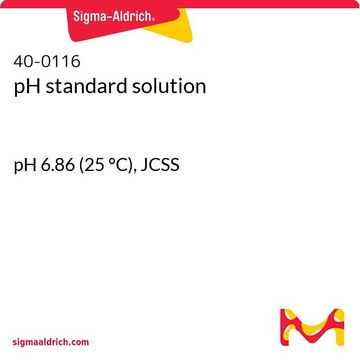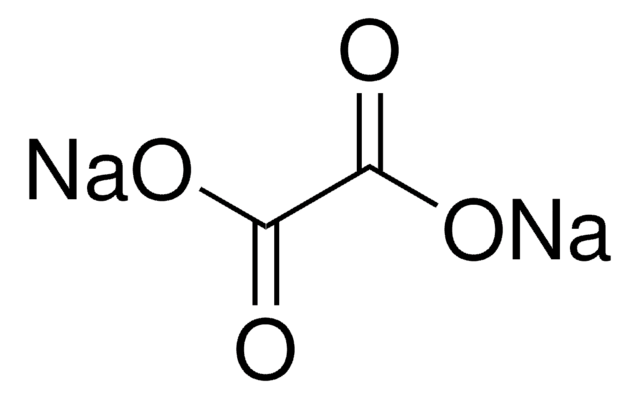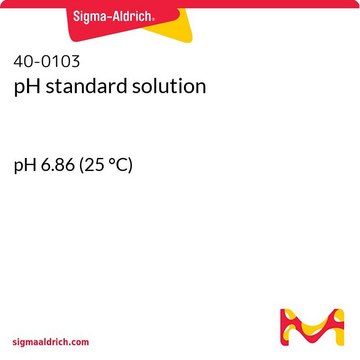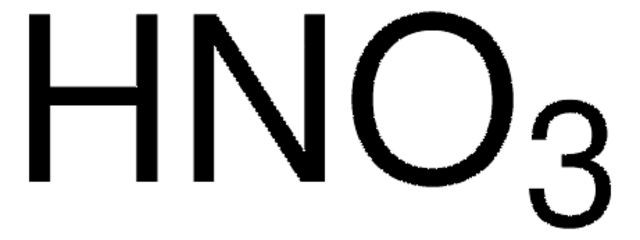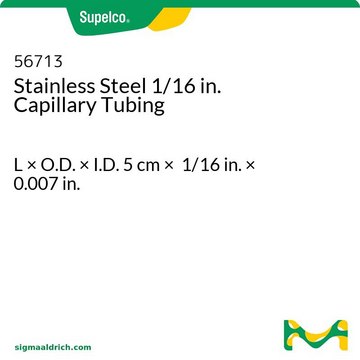所有图片(1)
About This Item
线性分子式:
SnCl2 · 2H2O
CAS号:
分子量:
225.65
MDL编号:
UNSPSC代码:
12352302
PubChem化学物质编号:
方案:
≥96.0%
表单:
solid
推荐产品
方案
≥96.0%
表单
solid
反应适用性
reagent type: catalyst
core: tin
存货情况
available only in Japan
沸点
652 °C (lit.)
mp
37-38 °C (dec.) (lit.)
适用性
suitable for determination of toxic metals
储存温度
2-8°C
SMILES字符串
O.O.Cl[SnH2]Cl
InChI
1S/2ClH.2H2O.Sn/h2*1H;2*1H2;/q;;;;+2/p-2
InChI key
FWPIDFUJEMBDLS-UHFFFAOYSA-L
正在寻找类似产品? 访问 产品对比指南
警示用语:
Danger
危险分类
Acute Tox. 4 Inhalation - Acute Tox. 4 Oral - Aquatic Chronic 3 - Eye Dam. 1 - Met. Corr. 1 - Skin Corr. 1B - Skin Sens. 1 - STOT RE 2 Oral - STOT SE 3
靶器官
Cardio-vascular system, Respiratory system
储存分类代码
8B - Non-combustible corrosive hazardous materials
WGK
WGK 3
闪点(°F)
Not applicable
闪点(°C)
Not applicable
法规信息
新产品
Rajendran Suresh et al.
The Journal of organic chemistry, 77(3), 1468-1476 (2012-01-11)
The synthesis of 2-(1H-pyrrolo[2,3-b]pyridin-3-yl)quinolines by a SnCl(2)-catalyzed multicomponent reaction has been described. The reaction proceeds chemo- and regioselectively in an atom-economic way, generating a library of 24 quinoline derivatives.
Aili Sun et al.
Talanta, 88, 259-264 (2012-01-24)
The Zn-Sn nanoparticles/multiwall carbon nanotubes (Zn-SnNPs/MWNTs) nanocomposite film was prepared by electrodeposition of ZnCl(2) and SnCl(2) on MWNTs simultaneously in Ethaline ionic liquids. Then, based on immobilizing hemoglobin (Hb) within a novel Zn-SnNPs/MWNTs nanocomposite film (Hb/Zn-SnNPs/MWNTs), a novel hydrogen peroxide
Matthew Currie et al.
Inorganic chemistry, 52(4), 1710-1721 (2012-06-09)
The anionic speciation of chlorostannate(II) ionic liquids, prepared by mixing 1-alkyl-3-methylimidazolium chloride and tin(II) chloride in various molar ratios, χ(SnCl2), was investigated in both solid and liquid states. The room temperature ionic liquids were investigated by (119)Sn NMR spectroscopy, X-ray
Caitian Gao et al.
Nanoscale, 4(11), 3475-3481 (2012-05-11)
A high-efficiency photoelectrode for dye-sensitized solar cells (DSSCs) should combine the advantageous features of fast electron transport, slow interfacial electron recombination and large specific surface area. However, these three requirements usually cannot be achieved simultaneously in the present state-of-the-art research.
Qiu-Sha Tang et al.
International journal of nanomedicine, 6, 3077-3085 (2011-12-14)
The purpose of this study was to develop intraperitoneal hyperthermic therapy based on magnetic fluid hyperthermia, nanoparticle-wrapped cisplatin chemotherapy, and magnetic particles of albumin. In addition, to combine the multiple-killing effects of hyperthermal targeting therapy, chemotherapy, and radiotherapy, the albumin-nanoparticle
我们的科学家团队拥有各种研究领域经验,包括生命科学、材料科学、化学合成、色谱、分析及许多其他领域.
联系技术服务部门
